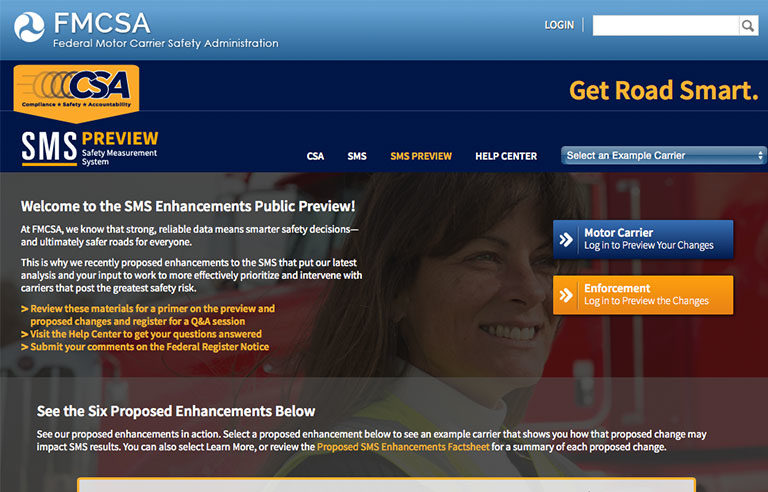FMCSA scraps proposed changes to Safety Measurement System

Photo: Federal Motor Carrier Safety Administration
Washington — The Federal Motor Carrier Safety Administration has withdrawn proposed changes to its Compliance, Safety, Accountability program and removed them from its Safety Measurement System website as part of a larger planned overhaul, according to a notice published in the July 16 Federal Register.
First introduced in June 2015 and later outlined in a Federal Register notice published Oct. 5, 2016, the six proposed changes to the SMS methodology for calculating percentiles included:
- Raising the minimum number of reportable crashes needed to establish the data sufficiency standard in the Crash Indicator BASIC to three from two.
- Assigning BASIC percentiles only to motor carriers that have had an inspection with a violation during the past year instead of the past two years.
FMCSA notes that it will accept suggestions from a June 2017 National Academies of Sciences correlation study to “develop a new statistical model to support the SMS.”
Mandated under the Fixing America’s Surface Transportation Act of 2015, the NAS study found that although “the current SMS implementation is defendable as being fair and not overtly biased against various types of carriers,” various implementation features “can be improved upon, and some of the details of the implementation are ad hoc and not fully supported by empirical studies.”
FMCSA uses CSA to assess how safely commercial motor vehicle carriers operate, relying heavily on the amount of violations found during roadside inspections and a carrier’s number of crashes. The agency then uses SMS to identify carriers at possible risk of future violations or crashes.
The Owner-Operator Independent Drivers Association agreed with NAS’ findings. An article published July 13 in OOIDA’s Land Line magazine highlighted some of the organization’s public comments on FMCSA’s proposed changes.
“Most of the discussion concerning CSA has centered primarily on the accuracy of the data and the methodology behind the safety ratings,” OOIDA commented, according to the article. “While these factors are important, OOIDA fears that they have distracted the agency and others from properly evaluating the action performance and effectiveness. Since the inception of the CSA and SMS programs in 2010, we have seen a steady uptick in truck-related crashes, injuries and fatalities of 39 percent, opposed to a 27 percent decrease in total crashes between 2005 and 2009.”
Post a comment to this article
Safety+Health welcomes comments that promote respectful dialogue. Please stay on topic. Comments that contain personal attacks, profanity or abusive language – or those aggressively promoting products or services – will be removed. We reserve the right to determine which comments violate our comment policy. (Anonymous comments are welcome; merely skip the “name” field in the comment box. An email address is required but will not be included with your comment.)

